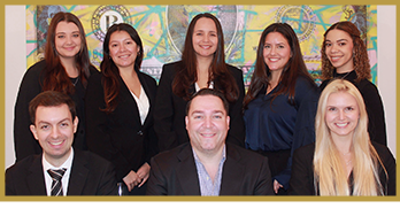

How to Structure Your Family Limited Partnership
Family limited partnerships are one method to manage your family assets and transfer wealth to the next generation. Such partnerships are complex, and if set up incorrectly can lead to many tax problems. This is why it is important to reach out to an experienced attorney to help you set up your FLP properly.
When setting up a Family Limited Partnership, it is important to take the following steps:
- Choose the partners for your FLP
- Name the partnership, checking its availability with the appropriate local government entity
- Choose the right jurisdiction in which to form the partnership
- File your certificate of limited partnership, with the information required by your state
- Obtain the taxpayer identification number so the FLP may file tax returns
- Draft a partnership agreement that specifies the responsibilities of all partners
- Transfer assets into the partnership
Most often, the parents form the partnership and contribute various income-producing or business assets in exchange for their respective partnership interests. They can initially receive a small interest in the partnership as the general partners. As such they equally control the partnership, as they previously controlled the contributed assets.
The parents may each also receive, as limited partners, the remaining majority interest in the limited partnership (general and limited partners can be the same parties, and both can own an interest in a limited partnership). Thus, they enjoy exclusive, equal ownership and control of the partnership and its assets, just as they controlled their assets titled in their own names. But their assets are now fully protected from creditors.
Ways to Structure a Family Partnership
There are many ways to structure a family partnership.
If one parent has creditors, the other may become the general partner. Or, the parents could form a corporation or (preferably) a limited liability company, to be the general partner in the partnership. This is a particularly good choice if the partnership can incur liabilities for which the general partners are liable.
They may subsequently transfer their limited partnership interests, perhaps gradually gift their limited partnership interests to their children, to a living trust, or some other entity, which may also be the limited partner. The limited partnership structure is flexible. The family limited partnership works well for estate planning and adapts itself to a systematic gifting program.
Family Limited Partnerships and Taxes
A most attractive tax feature of the family limited partnership is its ability to spread the tax burden between the partners any way they choose.
For example, a general partner parent in a high tax bracket could contribute large amounts of money to a partnership while retaining only a small interest, but full control. The tax burden for this contribution would thus be spread to the limited partners (the children) who own the majority interest in the partnership.
Trusts and Limited Partnerships
Combining trusts with limited partnerships makes for a powerful family Asset Protection device. However, combining a trust with a limited partnership is a more complicated structure than using either alone.
Combining the family limited partnership with the living trust can provide a superior estate plan. The partnership, as owner of the family assets, provides protection and discounted valuations for estate tax purposes. The limited partnership interests owned by the partners' respective living trusts lets the partners bequeath their partnership interest while avoiding probate.
In structuring this arrangement between spouses who own the partnership, it is assumed that they will take advantage of the unlimited marital deduction. Upon the grantor's death, the family trust becomes irrevocable, succeeded by two internal trusts: a credit-equivalent bypass trust and a marital trust.
This strategy essentially transfers the estate tax liability to the surviving spouse's estate, and defers estate taxes. The customary probate complexities and costs are avoided when the partnership interests are owned by living trusts. Delays in completing probate are avoided and creditors need not be notified, allowing disposition economically, quickly, and efficiently.
Yes, You Can Lose Everything!
You may think that your wealth is safe and that you don't need protection. But don't delude yourself and accept reality — for every 60 minutes you spend making money, spend 60 seconds thinking about how to protect it!


-
 Schedule an Educational Presentation
Schedule an Educational Presentation -
 Asset Protection Quiz
Asset Protection Quiz -
 Read Our Complimentary Books
Read Our Complimentary Books -
 Attend Our Complimentary Webinar
Attend Our Complimentary Webinar



